Stephen W. Hiemstra's Blog, page 270
February 1, 2015
Prayer Day 14: A Christian Guide to Spirituality by Stephen W. Hiemstra
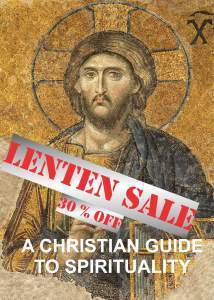
Goto: http://bit.ly/T2PNEUMA, Enter discount code: 83WZLNW4
Almighty Father. Judge of the living and the dead. Compassionate Spirit. May we follow your example and passionately pursue truth and justice. Help us to open our hearts and sharpen our minds. In the power of your Holy Spirit, grant us compassionate hearts for those in need. In Jesus’ precious name, Amen.
Padre Todopoderoso. Juicio de los vivos y los muertos. Espíritu de compasión. Que podamos seguir tu ejemplo y apasionadamente perseguir la verdad y justicia. Ayuda nos abrir nuestros corazones y agudizar nuestras mentes. En el poder de tu Espíritu Santo, da nos los corazones compasivos para los necesitados. En el preciosos nombre de Jesús, Amén.

January 30, 2015
The Gospel as Divine Template
 “if you confess with your mouth that Jesus is Lord and believe in your heart that God raised him from the dead, you will be saved.” (Rom 10:9 ESV)
“if you confess with your mouth that Jesus is Lord and believe in your heart that God raised him from the dead, you will be saved.” (Rom 10:9 ESV)
By Stephen W. Hiemstra
Christianity began with the resurrection in a graveyard (Ps 16:10). Without the crucifixion, the resurrection could not have occurred. Without Jesus’ life and ministry, the crucifixion could not have occurred. The Jesus story—life, suffering, death, and resurrection—is repeated over and over again in the New Testament [1]. Christianity began with God working miraculously in this world through Jesus’ life, suffering, death, and resurrection.
The Apostle Paul writes about the importance of the story of Jesus saying:
that I may know him and the power of his resurrection, and may share his sufferings, becoming like him in his death, that by any means possible I may attain the resurrection from the dead. (Phil 3:10-11 ESV)
In other words, Jesus lived, suffered, died, and was resurrected; therefore I should be willing to live, suffer, die, and so also be resurrected. The Gospel is accordingly lived out with the end in mind. Christian hope lies in the knowledge that we know the end of the story is in Christ.
Knowing the Gospel template (life, suffering, death, and resurrection), as Christians we pay careful attention to the words and life of Jesus. We also know implicitly that our lives will be in tension with our own sinful nature, the world, and a Holy God. Every word in the New Testament should be read: because Jesus was resurrected, therefore…
The Gospel writers wrote with the resurrection in mind. Writing to a Jewish audience, for example, the Gospel of Matthew portrays Jesus as a new Moses. Early in Matthew we see Jesus giving the law of grace on a mountain (much like Mount Sinai) with the Beatitudes. Moses traveled through the desert with the people of Israel to reach the promised land; Jesus likewise travels with his disciples through Israel ultimately reaching Jerusalem—a representation of the promise land. When the Apostle John writes about heaven, [because Jesus rose from the dead] heaven is more than just a metaphor for Eden or a magical new Jerusalem (Rev 11:12).
Because the Gospel template requires that we live a life patterned after the life of Jesus, we are in tension with our own sinful nature, the world, and a Holy God. Our Trinitarian God assists with each aspect of this tension. The Holy Spirit works in us to break the power of sin, to keep us in communication with God, and to give us power for Christian living. Jesus Christ provides our example in coping with life in the world. God our father demonstrates love, grace, and power over all earthly powers.
Early readers would accordingly have read the Beatitudes as the new law of grace and in view of the resurrection. For example, [because Jesus rose from the dead] “Blessed are the poor in spirit, for theirs is the kingdom of heaven.” (Matt 5:3 ESV) As we reflect on the tension we feel in our distracted lives as Christians, the Beatitudes are especially important. because in them Jesus responds to the tension in all three dimensions of our spiritual life: our tension with our own sinful nature (poor in spirit, mourning, and meekness), the world (peacemakers, reviled, and persecuted), and a Holy God (righteous, merciful, and pure). As Nouwen (1975, 15) observes: in our inner life, we can move from loneliness to solitude; in our communal life, we can move from hostility to hospitality; and in our life with Christ, we can move from illusion to prayer.
Because Jesus rose from the dead, we can live into the law of grace in our lives knowing that the end of the story is in Christ. We do not expect perfection in our walk, but we know the Holy Spirit will guide us along the way; we do not expect perfect community, but we have the example of Christ in seeking reconciliation; we do not expect every day to be a mountain top experience, but we know that God loves us. Our faith walk starts with God, not us.
[1] After the Gospels themselves, consider, for example, the sermons by both Peter (Acts 2:14–41; 10:34–43) and Paul (Acts 13:16–41) which focus on Jesus’ life story.
REFERENCE
Nouwen, Henri J. M. 1975. Reaching Out: The Three Movements of the Spiritual Life. New York: DoubleDay.

January 28, 2015
Re-examining Niebuhr’s Christ and Culture
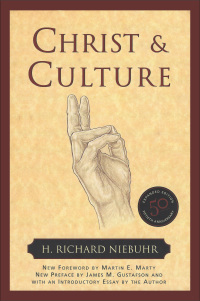 Richard Niebuhr. 2001. Christ and Culture (Orig. pub. 1951). New York: HarperSanFrancisco.
Richard Niebuhr. 2001. Christ and Culture (Orig. pub. 1951). New York: HarperSanFrancisco.
Review by Stephen W. Hiemstra
Niebuhr’s classic book, Christ and Culture, helped define the conversation around the sweeping changes in society that have occurred over the past generation. It is accordingly helpful to review Niebuhr’s writing before diving into the new world that we find ourselves in. Niebuhr lived from 1894 to 1962 and taught Christian ethics at Yale Divinity School during his career.
The study of ethics concerns itself with how to apply basic principles to life’s problems. Schools of thought are important in studying ethics because decisions must be made against competing objectives and placing differing priorities on the basic principles. For example, in deciding how to spent our nights and weekends, we frequently must make a tradeoff between parental duties (a deontological criteria) and future income (a teleological criteria). The tradeoff over how to spend this time accordingly poses an ethical problem.
Niebuhr’s contribution to the debate over the relationship of the church to culture in the United States in the 1950s was to develop a classification schema (or typological framework) of 5 conceptually possible relationships. In his introduction, he reviews different alternatives on which to base a classification schema, including: Psychological, churches and sects, mystics, social-economic, and philosophical methods (xxxix-xl). He prefers a theological basis to classify divided into 5 types (xli-lv)
1. Christ against culture (new law);
2. Christ of culture (natural law);
3. Christ above culture (synthetic or architectonic);
4. Christi and culture in paradox (dualistic or oscillatory); and
5. Christ transforming culture (conversionist).
In his first chapter, he retains this classification schema going on to discuss his definitions of Christ and culture. He starts out saying: “A Christian is ordinarily defined as ‘one who believes in Jesus Christ’ or as ‘a follower of Jesus Christ’” (11). He then goes on to reflect on the diversity within the Christian community . In defining culture, Niebuhr notes a parallel problem of diversity (that is, comparing two heterogeneous categories). He sees culture having 4 primary attributes:
1. It is social;
2. It includes human achievement;
3. It is a world of values; and
4. It is pluralistic (29-41).
Niebuhr structures Christ and Culture into 7 chapters, including:
1. The Enduring Problem (1-44);
2. Christ Against Culture (45-83);
3. The Christ of Culture (83-115);
4. Christ Above Culture (116-148);
5. Christ and Culture in Paradox (149-189);
6. Christ the Transformer of Culture (190-229); and
7. A Concluding Unscientific Postscript (230-256).
These chapters are preceded by numerous front matter sections (notes, acknowledgments, Foreword, Preface, and Introduction) and followed by an index. Clearly the focus of the book is on applying Niebuhr’s classification schema, not its justification.
Let me turn then to review Niebuhr’s 5 classifications.
Christ Against Culture. Niebuhr writes that this classification: “affirms the sole authority of Christ over the Christian and resolutely rejects culture’s claims to loyalty” (45). He then writes: “Every phase of culture falls under indictment. Through state, church, and property system are the citadels of evil, philosophy and science and arts also come under condemnation” (60). Although Niebuhr notes many advocates of this position, it is more normally today associated with the Anabaptists denominations, such as the Mennonites and some Pentecostals. God’s sovereignty is over both church and state.
The Christ of Culture. Niebuhr writes that these groups: “understand Christ through culture, selecting from his teaching and action as well as from the Christian doctrine about him such points as seem to agree with what is best in civilization” (83). Christ is viewed as the great educator (84). Participation in the culture poses no particular problem (87). Liberal and fundamentalist can both join in this classification (91), but the offense of Christ to culture appears lost in the accommodation (108).
Christ Above Culture. Niebuhr sees “the great majority in Christianity” who “refused to take either the position of the anti-cultural radicals [Christ Against Culture] or that the accommodation of Christ to culture [Christ of Culture]…For the fundamental issue does not lie between Christ and the world…but between God and man” (117). He further divides the great majority into “synthesists, dualists, and conversionists” (116) which make up his last 3 classes. The Christ Above Culture class is “the synthesis [who] affirms both Christ and culture” (120). Saint Thomas Aquinas is the arch-type for this class.
Christ and Culture in Paradox. Niebuhr’s dualist “divides the world…into realms of light and darkness, of kingdoms of God and Satan” (149). Niebuhr sees the Apostle Paul as a dualist (166).
Christ the Transformer of Culture. Niebuhr says “The conversionist…does not live so much in expectation of a final ending of the world of creation and culture as in awareness of the power of the Lord to transform all things by lifting them up to himself” (195). He sees Calvin falling into this category (217).
Clearly, Niebuhr offered a starting point for discussing the relationship of Christ and culture. The economist in me is, however, confused by this classification schema not only because it compares apples and oranges (Christ as a kind of arch-type and culture largely undefined), but because it distinguishes attributes of every Christian’s journey of faith as separate classes. For example, while Niebuhr sees the Apostle Paul as a dualist, Paul is also the great articulator of conversion. How else could we classify the Paul of Romans 12:1-2? Is Paul to be thought theologically inconsistent or schizophrenic? My expectation (as an economist) is an apples-to-apples comparison of Christian and pagan culture.
Niebuhr implicitly presumes that both pagans outside the church and Christians inside the church are in some measure influenced by Christ. The ideas of competing religious influences or of cultural influences on Christ have relatively little influence on Niebuhr’s schema as he focuses on Christ’s influence on culture. While this emphasis may have been helpful in 1951, today it is clearly incomplete. For example, the fastest growing religion in the United States is Islam, even if primarily because of immigration—how does that fit in here? Our post-Christian culture is clearly no longer captive to Christian influence, if it ever was.
More to the point, the biggest challenge in the church today is syncretism—cultural influences, not from Christ to the culture, but from an increasingly secular culture to the church. This challenge raises serious issues for Niebuhr’s classification. While Christ is not changed by syncretism, our interpretation of Christ may be. The church, which was established by the Holy Spirit at Pentecost, clearly is also influenced. Appeals then to Niebuhr’s classification accordingly appear anachronistic—an appeal to glories no longer evident. Worse, the classifications invite Christians to define their journey of faith in a particular classification rather than live out the entire Gospel witness. Consequently, if we are to appeal to a classification schema at all, it needs to be formulated based more exacting definitions of both Christian culture and pagan culture.

January 26, 2015
Poet Gary L. Alston Dreams Big, Shares Pain
 Gary L. Alston. 2011. Dreams—Poems and Short Stores. Xlibris: United States.
Gary L. Alston. 2011. Dreams—Poems and Short Stores. Xlibris: United States.
Review by Stephen W. Hiemstra
Pastors love to illustrate their points by telling stories. Stories communicate—we remember stories—because stories define who we are and why. We all tell stories.
Earlier this month I attended an interesting presentation on non-fiction, Christian narrative. Author Catherine Claire Larson defines non-fiction, Christian narrative as: a story of a sequence of actions that occur when a sympathetic character encounters a complicating situation that he/she confronts and solves.
Sitting next to me during this presentation was author Gary L. Alston. Alston lives in Riverdale, Maryland where I grew up and attended high school. We had an immediate connection. Before the evening was over we had traded books.
Gary’s title, Dreams—Poems and Short Stores, describes his book’s content and structure. After dedicating the book to his mother, wife, and friends that encouraged him, there is a foreword by Adrienne Felton. Then, Gary provides a series of poem (13-44), a section of personal photographs (44-53), and a series of short-stories.
Gary’s writing is highly personal recording his personal experiences—many quite painful—and maintaining a keen eye to the human condition. Although Gary is African American (and I am not), I found my own experiences among his poems and stories growing up in Washington DC. In reading along, Gary’s first love is obviously poetry because even his short stories have a poetic character, if not meter.
A personal favorite is his story: I’ll Be Seeing You (55-57). In this story with three moves, he starts out by describing eye glasses: “They come in many colors and shapes” (55). He then describes his first encounter where he noticed glasses—on a young woman in the third grade: Etta Mae (55). His final and most lengthy move describes a glasses-wearing cousin, Fred, whose nickname, Puddin, was unappreciated and required a scuffle with bullies to prove his mettle (55-57). Fred’s coming of age story took me back to my youth in an unexpected turn of events.
None of us control the world that we live in, but we control our response to it. Do we respond to tragedy with God’s grace and dignity or do we melt before the refiner’s fire and become embittered? Gary’s response has been to welcome us into his world where grace and dignity are lived out.
John Savage makes this point in his book: Listening & Caring Skills: A Guide for Groups and Leaders (http://wp.me/p3Xeut-4e).
Billy Graham’s writing and preaching make extensive use of non-fiction, Christian narrative (http://wp.me/p3Xeut-52).
Catherine Claire Larson–Author, Reporter, Feature Writer, Script Writer, Monday, January 12, 2015: “Stories of Reality: Finding and Telling the True Stories That Matter” (http://bit.ly/1CVHxq7).
January 25, 2015
Prayer Day 13: A Christian Guide to Spirituality by Stephen W. Hiemstra

Goto: http://bit.ly/T2PNEUMA, Enter discount code: 83WZLNW4
Almighty God. We praise you for the assurance of your love for us that we have in Jesus Christ. Following your lead, soften our hearts, sharpen our minds and strengthen our hands for your service. In the power of your Holy Spirit, empower us to be faithful stewards of the Gospel story. In Jesus’ precious name,
Dios Todopoderoso. Te alabamos por el aseguro de tu ama para nosotros que tenemos en Jesucristo. Siguiendo tu ejemplo, ablandar nuestros corazones, agudizar nuestras mentes, y fortalecer nuestras manos en tu servicio. En el poder de tu Espíritu Santo, dar nos el poder a ser siervos fieles de la cuenta evangélica. En el nombre preciosos de Jesús, Amén.

January 23, 2015
Bothersome Gaps: Life in Tension

Art by Stephen W. Hiemstra
“Be holy because I am holy” (Lev 11:44) says the Lord God.
To become a Christian, we must invite the Holy Spirit into our lives. The spirit of holiness becomes part of us and we begin to become the image in which we were created. To be holy means to be set apart; to be sacred. We take on a new identity in Christ. The invitation to be holy is an invitation to approach God and bear His image more clearly. The Apostle Paul calls this process sanctification (Rom 6:19).
If we lived alone on a mountain top, then our process of sanctification would pose no problem other than obedience. But our mountain top experiences are necessarily short. We depend on other people and they also depend on us. Success in sanctification creates a gap between ourselves and other people because biblical and cultural values differ [1]. It also assumes a gap between us and God characterized by sin, inattention, and other shortcomings.
A pastor recently asked: would you drink from a dirty cup? (2 Tim 2:20) Of course not. If you were given a dirty cup, you would refuse the cup and ask for another . In the same way, the call of God to be holy naturally sets us apart from those around us as God’s Holy Spirit acts in our lives. The gap that emerges between us and those around us in our actions (not our words) which identifies us as Christians. This gap also sets us in tension with the world. Image bearers naturally bear the image of their creator—it cannot be otherwise.
In this simple analysis, we actually experience three related gaps. The first gap is the gap between who we were and the person that God created us to be. The Apostle Paul writes: “For I do not understand my own actions. For I do not do what I want, but I do the very thing I hate.” (Rom 7:15 ESV) The second gap is between us and God. The Prophet Isaiah writes: “Woe is me! For I am lost; for I am a man of unclean lips, and I dwell in the midst of a people of unclean lips; for my eyes have seen the King, the LORD of hosts!” (Isa 6:5 ESV) The third gap is between us and those around us. Sin separates us even from those closest to us . These gaps are related because we are born in sin and only imperfectly reflect God’s image. Progress in reducing one gap therefore leads to progress in reducing the other two (Nouwen 1975, 15).
As a practical matter, gaps created by the work of God’s Holy Spirit in our lives cause tension. The gap between who we are and who we were created to be causes us shame and grief. The gap between us and God—our sin— deprives us of spiritual power and leaves us alone. The gap between us and others can lead to ridicule, isolation and persecution. Writing from a prison cell in Rome, the Apostle Paul reminds us: “our citizenship is in heaven” (Phi 3:20 ESV). Here on earth, we are refugees—undocumented workers earning subsistence wages.
Can you feel the tension created by these gaps? Are you okay with it or do you try to run away?
Jesus talks about the gap; he addresses the tension; he points to the source. He says:
“You are the light of the world. A city set on a hill cannot be hidden. Nor do people light a lamp and put it under a basket, but on a stand, and it gives light to all in the house. In the same way, let your light shine before others, so that they may see your good works and give glory to your Father who is in heaven.” (Matt 5:14-16 ESV)
If we are to expect tension, what does it look like and how do we deal with it?
[1] Niebuhr (2001, 39) writes: “In his single-minded direction toward God, Christ leads men [and women] away from the temporality and pluralism of culture.”
Pastor Anthony K. Bones of African Gospel Church of Nairobi, Kenya (http://AGCKenya.org) speaking at Trinity Presbyterian Church, Herndon, Virginia on January 14, 2015.
“The LORD said to Cain, ‘Why are you angry, and why has your face fallen? If you do well, will you not be accepted? And if you do not do well, sin is crouching at the door. Its desire is for you, but you must rule over it.’ Cain spoke to Abel his brother. And when they were in the field, Cain rose up against his brother Abel and killed him.” (Gen 4:6-8 ESV)
REFERNCES
Nouwen, Henri J. M. 1975. Reaching Out: The Three Movements of the Spiritual Life. New York: DoubleDay.
Richard Niebuhr. 2001. Christ and Culture (Orig. pub. 1951). New York: HarperSanFrancisco.

January 21, 2015
Younger Brings Life to the Books of Judges and Ruth
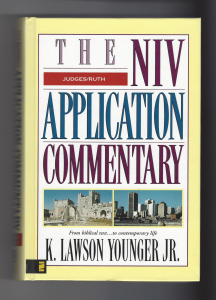 K. Lawson Younger, Jr. 2002. The NIV Application Commentary: Judges/Ruth. Grand Rapids: Zondervan.
K. Lawson Younger, Jr. 2002. The NIV Application Commentary: Judges/Ruth. Grand Rapids: Zondervan.
Review by Stephen W. Hiemstra
Commentaries are important to our faith. Commentaries provide the lens through which we understand scripture either through personal study or the preaching that they are exposed to. When I am not teaching, I read commentaries devotionally.
The author of the Book of Judges famously writes: In those days there was no king in Israel. Everyone did what was right in his own eyes (Judges 17:6 ESV). Sound familiar? Not coincidentally, the postmodern period is also characterized by this same characteristic—an extreme focus on equality. Other focuses are possible. Tension between different groups in society over the rights of individuals and the rights of the community highlight, in part, change in the values held most dearly [1]. The focus on individual initiative in the Book of Judges speaks to the moral challenge of our own time [2]. By contrast, the Book of Ruth paints a picture of faithfulness and God’s providence in the midst of otherwise chaotic and desperate lives.
Younger describes the purpose of the Book of Judges as: the consequences of disobedience to God with the resultant moral degeneration that characterized the history of this period (23). A judge was more of a tribal leader rather than a government official in charge of deciding legal matters as we might think of a judge (22). Leadership was less formal, more charismatic. The book ends on the period of the judges were the death of Joshua and the coronation of King Saul—a period of no more than 400 years (24). Ruth, being the great grandmother of King David (Ruth 4:17), also lived during this period.
The structure of the Book of Judges aids in observing the moral degeneration of both the judges and the people. Younger notes the following cycle being repeated throughout the accounts:
1. Israel does evil in the eyes of Yahweh;
2. Yahweh gives/sells them into the hands of oppressors;
3. Israel serves the oppressor for X years;
4. Israel cries out to Yahweh;
5. Yahweh raises up a deliverer (i.e. judge);
6. The spirit of Yahweh is upon the deliverer;
7. The oppressor is subdues;
8. The land has “rest” for X years (35).
In reviewing the particular judges, Younger notes that over time the judges were increasingly ignorant of God and his covenant, and increasingly prone to idolatry. The two most famous judges, Samson and Gideon, therefore exemplify this trend showing serious personal flaws. The book speaks not of their suitability as role models, but of God’s forbearance and love.
Perhaps of most interest to a contemporary audience are the roles of Deborah and Jael, both women. In a male dominated society, both women assume roles normally reserved for men, in part, to highlight the degeneration of the men, in this case, Barak and Sisera (138-146). Younger makes the point that rather than setting Deborah and Jael up as role models, the author of Judges uses them as a foil to highlight the degeneration of the men. Elevation of the women does fill the gap created by responsibility-avoiding men, but it is not the author’s focus.
Much more could be said about the Book of Judges—especially in view of contrary opinions. However, in a short review it is more interesting to turn to the Book of Ruth. Ruth is a stark contrast to the Book of Judges.
The key verse in the Book of Ruth highlights the transformative power of faith:
But Ruth said, Do not urge me to leave you or to return from following you. For where you go I will go, and where you lodge I will lodge. Your people shall be my people, and your God my God. (Ruth 1:16 ESV)
Through faith and fidelity to God’s law even an immigrant woman from Moab living in Israel finds protection under God’s providential care. God later acts through her faithfulness to bring about both the Kingship of David and the redemption of Jesus himself. The Book of Ruth accordingly displays the faithful remnant in Israel that transforms the nation itself during a general period of decline and degeneracy.
The themes outlined in the Younger study deserve more attention. The usual treatment of the judges and of the characters in Ruth as heroes of the faith fails to capture the subtly of the actual stories. Younger paints a more realistic picture—one that informs our own times.
[1] Most professionals, for example, are trained to value objectivity most dearly—the dominant value held in the modern period. In the feudal period loyalty was the highest value. At any given point, the priority placed on these values may differ among social groups.
[2] The NIV Application Commentary has been my default commentary over the past decade because the series takes the narrative of scripture seriously. Once I am acquainted with an orthodox interpretation, I can judge a book from other dimensions. I have taught from the series the Books of Romans, Luke, Genesis, Revelations, John, Matthew, Galatians, and 1 & 2 Corinthians (I may have forgotten some books). The series takes seriously John Stott’s division of the homiletical task into 3 things: the author’s context (original meaning), the reader’s context (contemporary significance), and the need to bridge the two (bridging contexts).
References
John Stott. 1982. Between Two Worlds: The Challenge of Preaching Today. Grand Rapids: Eerdmans.

January 19, 2015
Jepson Explores Spiritual Practices in Writing Craft
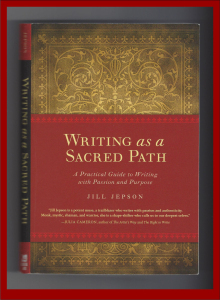 Jill Jepson. 2008. Writing as a Sacred Path. Berkeley: Celestial Arts.
Jill Jepson. 2008. Writing as a Sacred Path. Berkeley: Celestial Arts.
Review by Stephen W. Hiemstra
The journey home requires travel in foreign lands. The prodigal son could not love his father until he had left him; his older brother never came to love his father (Luke 15). Much like contrast reveals the outlines of what we see, sometimes it is helpful to explore foreign lands in finding our way home.
In her book, Writing as a Sacred Path, Jill Jepson teaches writing through exercises in alternative, especially eastern, spiritual traditions. She writes:
One of the writer’s highest goals is to express the inner workings of the human spirit in ways that evoke understanding and empathy. By making it possible for people of different regions, beliefs, and cultures to communicate, by allowing people to share each other’s experiences and views of the world, the writer acts as a warrior for peace (198-199).
Because many screen plays employ eastern spiritual practices and sometimes even eastern themes and settings, it is not surprising that this book would be published in California and writers there would find these exercises helpful.
Jepson writes in 10 chapters organized in 4 parts:
1. The Mystic Journey (Transcendent Awareness; Crazy Wisdom),
2. The Monastic Path (The Writer in Silence and Solitude; The Writer in Community)
3. The Way of the Shaman (Darkness and Healing in the Writer’s Path; Sacred Ground), and
4. The Warrior Road (Honor and Courage in the Writing Lift; Strategy and Skill for the Warrior Writer).
She describes these 4 parts as gateways to the sacred (9). The first two chapters (The Call and The Sacred Gift) function as an introduction. A conclusion (Walking the Sacred Path) follows chapter 10. The conclusion is followed by endnotes, a bibliography, an index, and a brief description of the author. Jepson describes herself as: a writer, traveler, linguistic anthropologist, and college professor (246). She knows her stuff.
Chapter 2, The Sacred Gift, bears special attention because it focuses on the critical role of stories in affecting personal and social change (21). The writer, as storyteller, plays a pivotal role in culture. Citing Buddhist and Hindu origins, she defines the idea of a mandala—a geometric depiction of the cosmos making our universe understandable—the opposite of a monkey mind—a chaotic, rapidly changing state of mind (21). A mathematical model or graph might, for example, function as a mandala. Jesus’ use of parables might form such mandalas and illustrate the transformational potential of stories.
Jepson applies her lessons through spiritual exercises which she annotates as: sacred tools. The book provides dozens of these tools. These exercises can have a couple steps or be rather lengthy. One tool, for example, is a visualization exercise:
1. Write your experience,
2. Imagine your opponent’s experience, and
3. Create a character (195-196).
Walking in someone’s shoes is certainly an old idea, but it is also a helpful writing exercise in any tradition.
Jepson has written an insightful writing manual. Writing as a Sacred Path is a fascinating book. The blend of Christian and pagan references, however, could easily lead to spiritual confusion. Christian spirituality begins with God, not with us. When we engage in spiritual practices designed to enhance our talents or power over ideas, we stray from Christian into pagan practice. This is a journey that writers need not and should not take lightly. Nevertheless, the journey home requires travel in foreign lands and we are better for it.

January 18, 2015
Prayer Day 12: A Christian Guide to Spirituality by Stephen W. Hiemstra

Goto: http://bit.ly/1ClNITN, Enter discount code: 83WZLNW4
Heavenly Father. We praise you for Christ’s faithful example in life, death, and resurrection. In the power of your Holy Spirit, banish our doubt; prosper our faith; heal our sin-sick souls; and grant us peace. In Jesus’s name, Amen.
Padre Celestial. Te alabamos por el ejemplo fiel de Jesús en la vida, la muerte, y la resurrección. En el poder de tu Espíritu Santo, desterrar nuestras dudas; prosperar nuestra fe; sanar nuestras almas enfermas de pecado; y dar nos paz. En el nombre de Jesús oramos, Amén.

January 16, 2015
How Do We Nurture our Walk with the Lord?
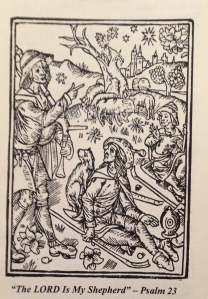 Put on then, as God’s chosen ones, holy and beloved, compassionate hearts, kindness, humility, meekness, and patience, bearing with one another and, if one has a complaint against another, forgiving each other; as the Lord has forgiven you, so you also must forgive. (Col 3:12–13)
Put on then, as God’s chosen ones, holy and beloved, compassionate hearts, kindness, humility, meekness, and patience, bearing with one another and, if one has a complaint against another, forgiving each other; as the Lord has forgiven you, so you also must forgive. (Col 3:12–13)
By Stephen W. Hiemstra
We must nurture our walk with the Lord, but control is not in our hands. “Discipleship means adherence to Christ” (Bonhoeffer 1995, 59).
Jesus tells the story of a man with two sons. The younger son came to him one day and asked for his inheritance in cash. He then took the money, left town, and began living in style. This reckless lifestyle did not last long and soon the young man had to get a job. Not being a planner, he had to accept degrading work. As the son’s mind began to wander, he remembered his good life at home and resolved to beg his father to take him back as a household servant. When the father saw that his son was coming, he went out to meet him and wrapped his arms around him. As the son began to apologize for his horrible behavior, his father would hear none of it. He took his son; cleaned him up; got him some new clothes [1]; and threw a party. Later, when his older brother came home and discovered the party, he became jealous and started behaving badly. But his father reminded him: “celebrate and be glad, for this your brother was dead, and is alive; he was lost, and is found.” (Luke 15:32)
The story of the Prodigal Son shows a young man going through a series of challenges—transitions—that enabled him to see his father with new eyes and to accept his father’s help [2]. Without these challenges, he would not have been able to bridge the gap between him and his father.
For us, hospital visits often pose such transitions. Hospital visits normally start with a health problem; lead to a confusing period of medical treatment; and end with a return to life outside. The twist is that the health problem itself is often a symptom, not the real cause, of the visit. The real problem may be grief over the death of a family member, unresolved trauma from the past, or a bad lifestyle choice. Because a solution to the real problem remains clouded by denial, many people needlessly die of preventable diseases and treatable ailments.
Clouds also cover our journey of faith. We all deny the need for God’s grace and have nasty stumbling blocks—especially pride, other sins, and our own mortality—that must be removed in order to deliver us from our focus on ourselves. It is only through accepting God’s grace that we are able to take the necessary steps of obedience.
The story of the Prodigal Son assures us that our heavenly Father is anxious to forgive, anxious for us to take steps of obedience, and anxious to bridge the gap that we cannot bridge ourselves.
[1] As Christians, we share mostly just one thing in common: we are forgiven. It is our heavenly Father who clothes us with: “compassionate hearts, kindness, humility, meekness, and patience.” (Col 3:12) But the clothes are a gift, we did not earn them!
[2] Turansky and Miller (2013, 4) observe: “Even in Old Testament times, God knew that kids learn best through life experiences.”
REFERENCES
Bonhoeffer, Dietrich. 1995. The Cost of Discipleship (Orig. pub. 1937). New York: Simon and Schuster.
Turansky, Scott and Joanne Miller. 2013. The Christian Parenting Handbook: 50 Heart-Based Strategies for All the Stages of Your Child’s Life. Nashville: Thomas Nelson.





